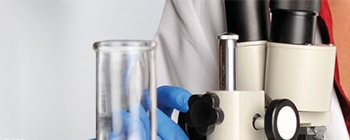Learn More
2,6-Dibromo-4-methylaniline, 98+%
CAS: 6968-24-7 | C7H7Br2N | 264.948 g/mol
Supplier: Thermo Scientific Chemicals A1718414
Description
2,6-Dibromo-4-methylaniline is used as coupling reagent in spectrophotometric determination of carbaryl in various environmental samples. It was also in preparation of 2-bromo-6-iodo-4-methylaniline. 2,6-Dibromo-4-methylaniline undergoes Suzuki-coupling reaction with 2-dihydroxyboryl-3-methyl-2-cyclopenten-1-one during synthesis of the dinuclear dichlorotitanium complexes. 2,6-Dibromo-4-methylaniline is also used as an intermediate for the synthesis of pharmaceutucals, agrochemicals, dyes and other organic chemicals.
This Thermo Scientific Chemicals brand product was originally part of the Alfa Aesar product portfolio. Some documentation and label information may refer to the legacy brand. The original Alfa Aesar product / item code or SKU reference has not changed as a part of the brand transition to Thermo Scientific Chemicals.
Applications2,6-Dibromo-4-methylaniline is used as coupling reagent in spectrophotometric determination of carbaryl in various environmental samples. It was also in preparation of 2-bromo-6-iodo-4-methylaniline. 2,6-Dibromo-4-methylaniline undergoes Suzuki-coupling reaction with 2-dihydroxyboryl-3-methyl-2-cyclopenten-1-one during synthesis of the dinuclear dichlorotitanium complexes. 2,6-Dibromo-4-methylaniline is also used as an intermediate for the synthesis of pharmaceutucals, agrochemicals, dyes and other organic chemicals.
Solubility
Insoluble in water.
Notes
Stable under ordinary conditions.
Specifications
| 2,6-Dibromo-4-methylaniline | |
| 72°C to 76°C | |
| MFCD00007641 | |
| 2085782 | |
| Insoluble in water. | |
| CC1=CC(=C(C(=C1)Br)N)Br | |
| 264.948 | |
| 264.96 |
| 6968-24-7 | |
| C7H7Br2N | |
| 25 g | |
| 2,6-dibromo-p-toluidine, 3,5-dibromo-4-aminotoluene, benzenamine, 2,6-dibromo-4-methyl, 2,6-dibromo-4-methyl aniline, 2,6-dibromo-4-methyl-phenylamine, 2,6-dibromo-4-methylphenylamine, 2,6-dibromo-4-methyl-benzenamine, pubchem2334, acmc-209oag, 2,6-dibromo-p-toludine | |
| ATDIROHVRVQMRO-UHFFFAOYSA-N | |
| 2,6-dibromo-4-methylaniline | |
| 81427 | |
| ≥98% |
Chemical Identifiers
| 6968-24-7 | |
| 264.948 | |
| ATDIROHVRVQMRO-UHFFFAOYSA-N | |
| 81427 | |
| CC1=CC(=C(C(=C1)Br)N)Br |
| C7H7Br2N | |
| MFCD00007641 | |
| 2,6-dibromo-p-toluidine, 3,5-dibromo-4-aminotoluene, benzenamine, 2,6-dibromo-4-methyl, 2,6-dibromo-4-methyl aniline, 2,6-dibromo-4-methyl-phenylamine, 2,6-dibromo-4-methylphenylamine, 2,6-dibromo-4-methyl-benzenamine, pubchem2334, acmc-209oag, 2,6-dibromo-p-toludineShow More | |
| 2,6-dibromo-4-methylaniline |
Safety and Handling
GHS H Statement
H301-H311-H332-H315-H319-H335
Toxic if swallowed.
Toxic in contact with skin.
Harmful if inhaled.
Causes skin irritation.
Causes serious eye irritation.
May cause respiratory irritation.
P261-P264b-P270-P271-P280-P301+P312-P302+P352-P304+P340-P305+P351+P338-P312-P330-P332+P313-P362-P501c
H302+H312+H332-H315-H319-H335
DOTInformation : Hazard Class: 6.1; Packaging Group: III
EINECSNumber : 230-182-9
TSCA : No
Recommended Storage : Ambient temperatures
RUO – Research Use Only






